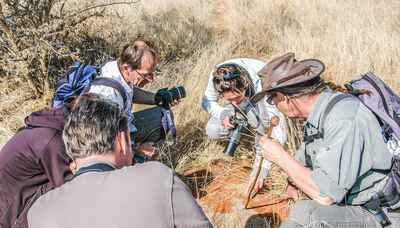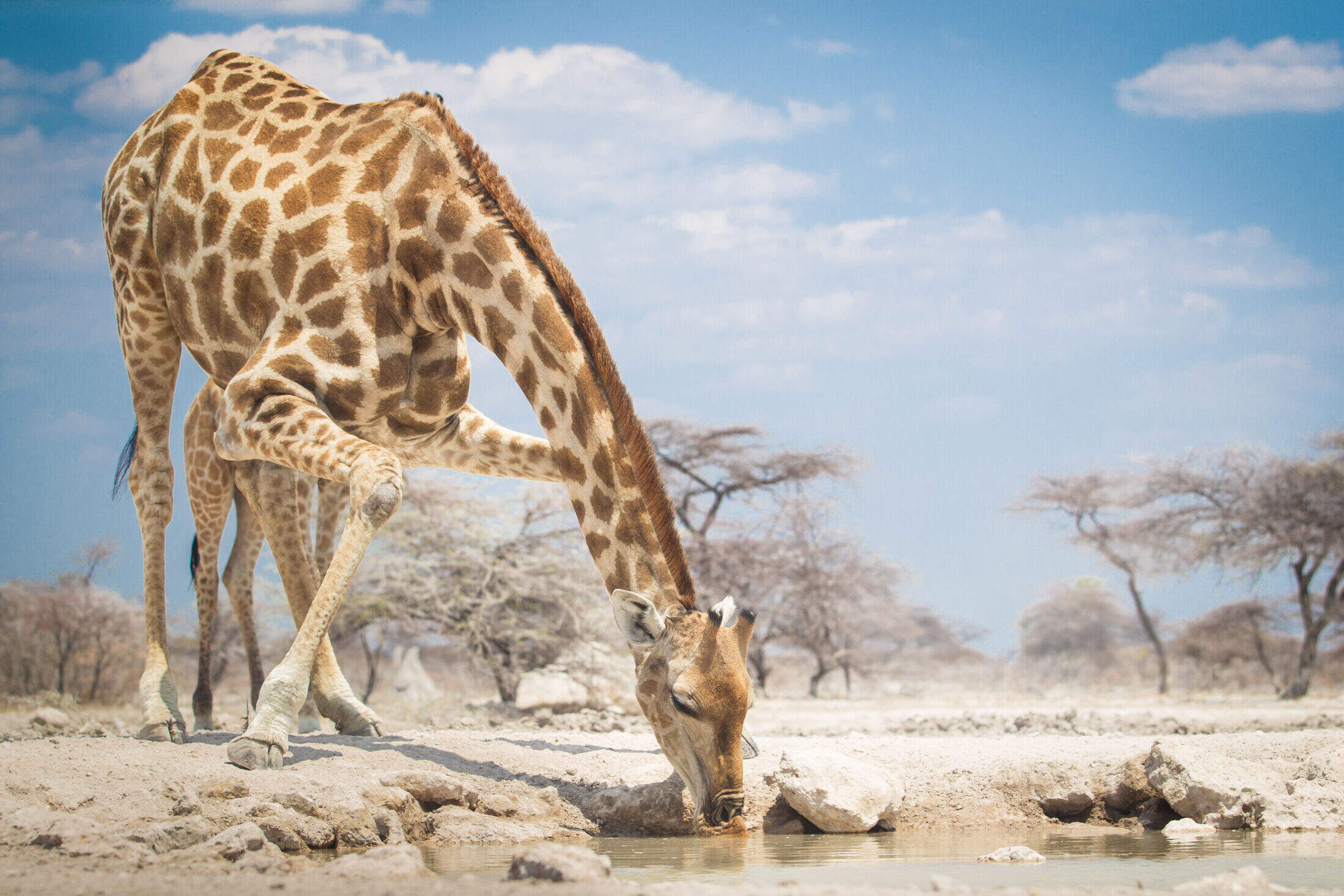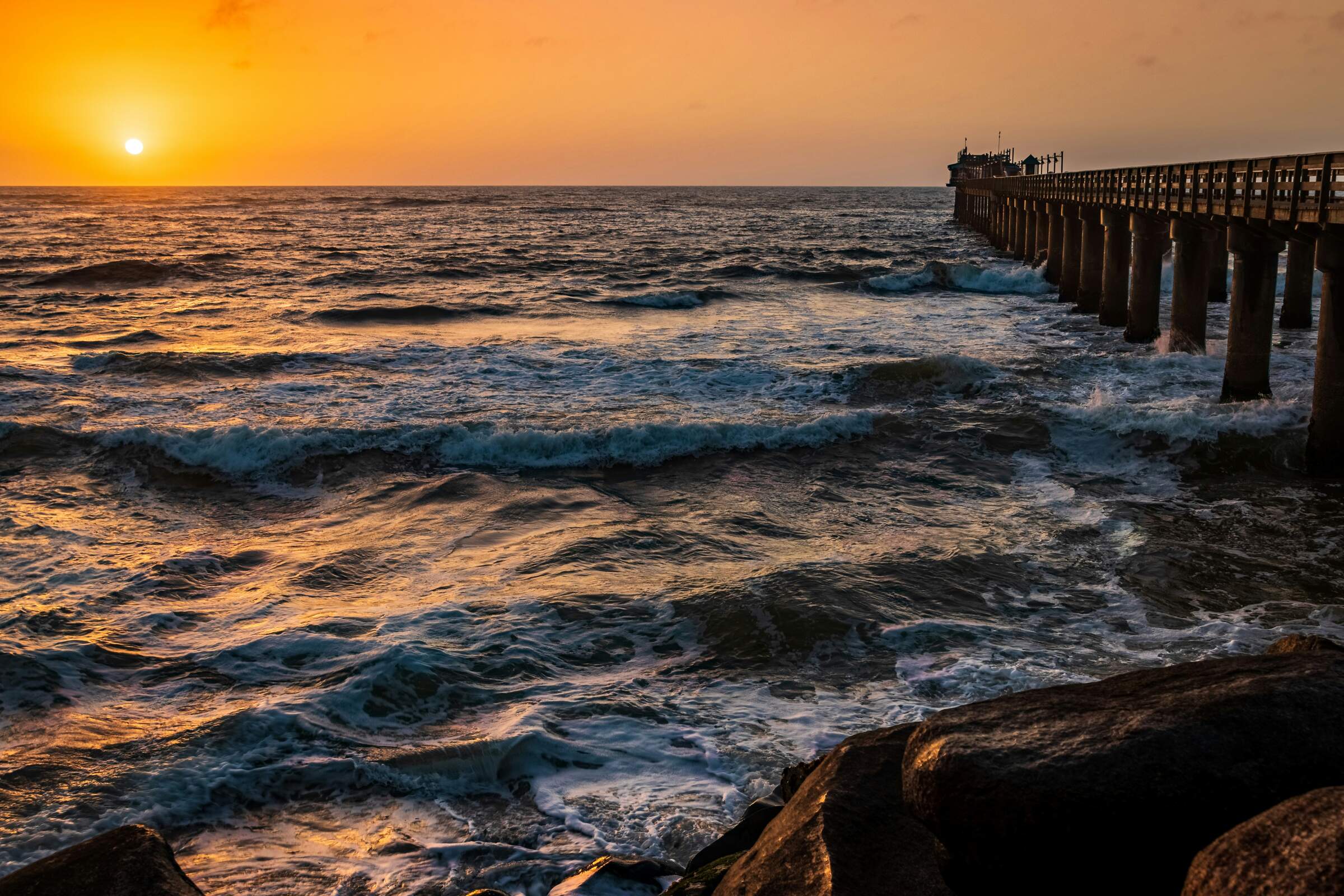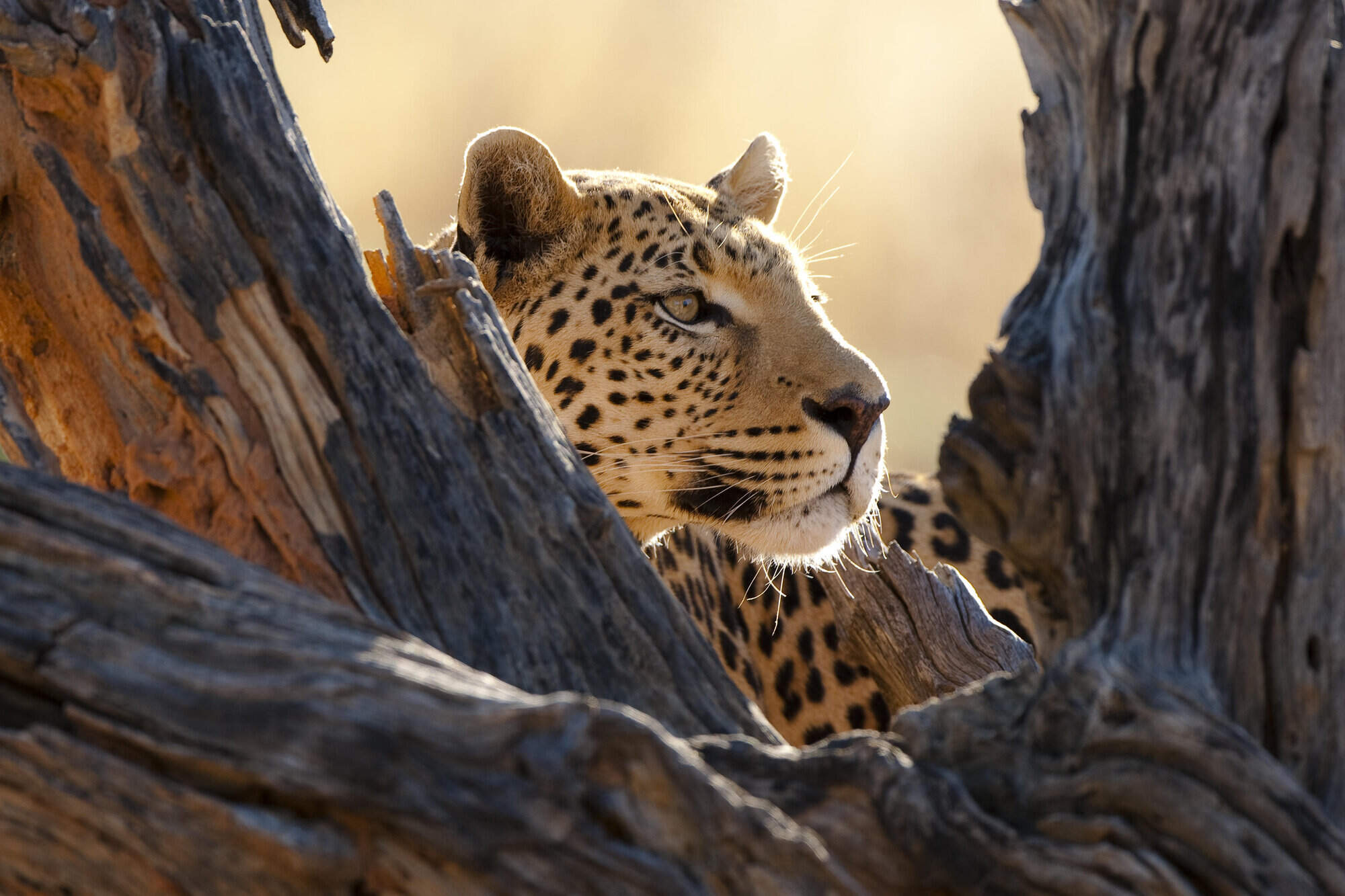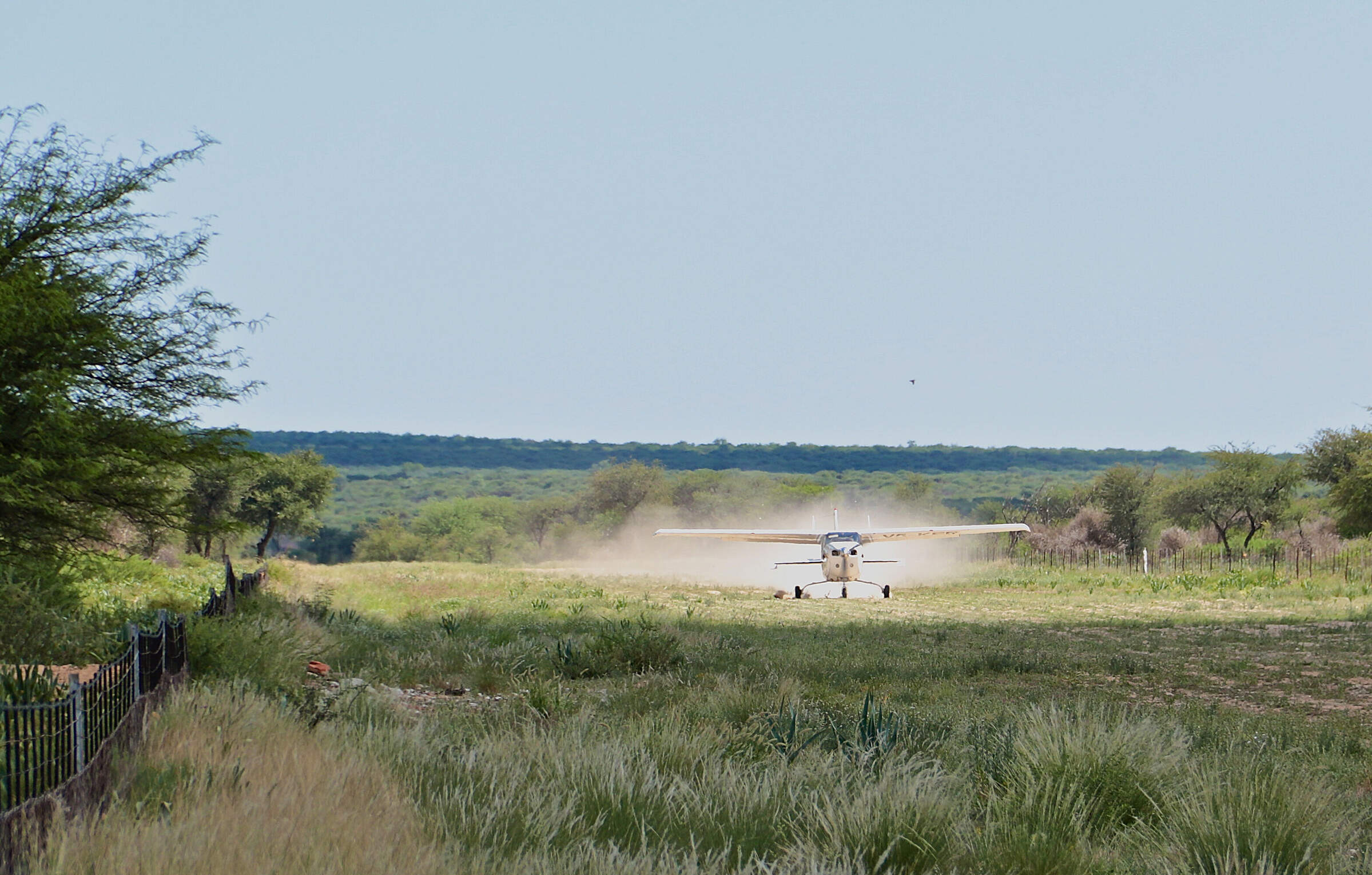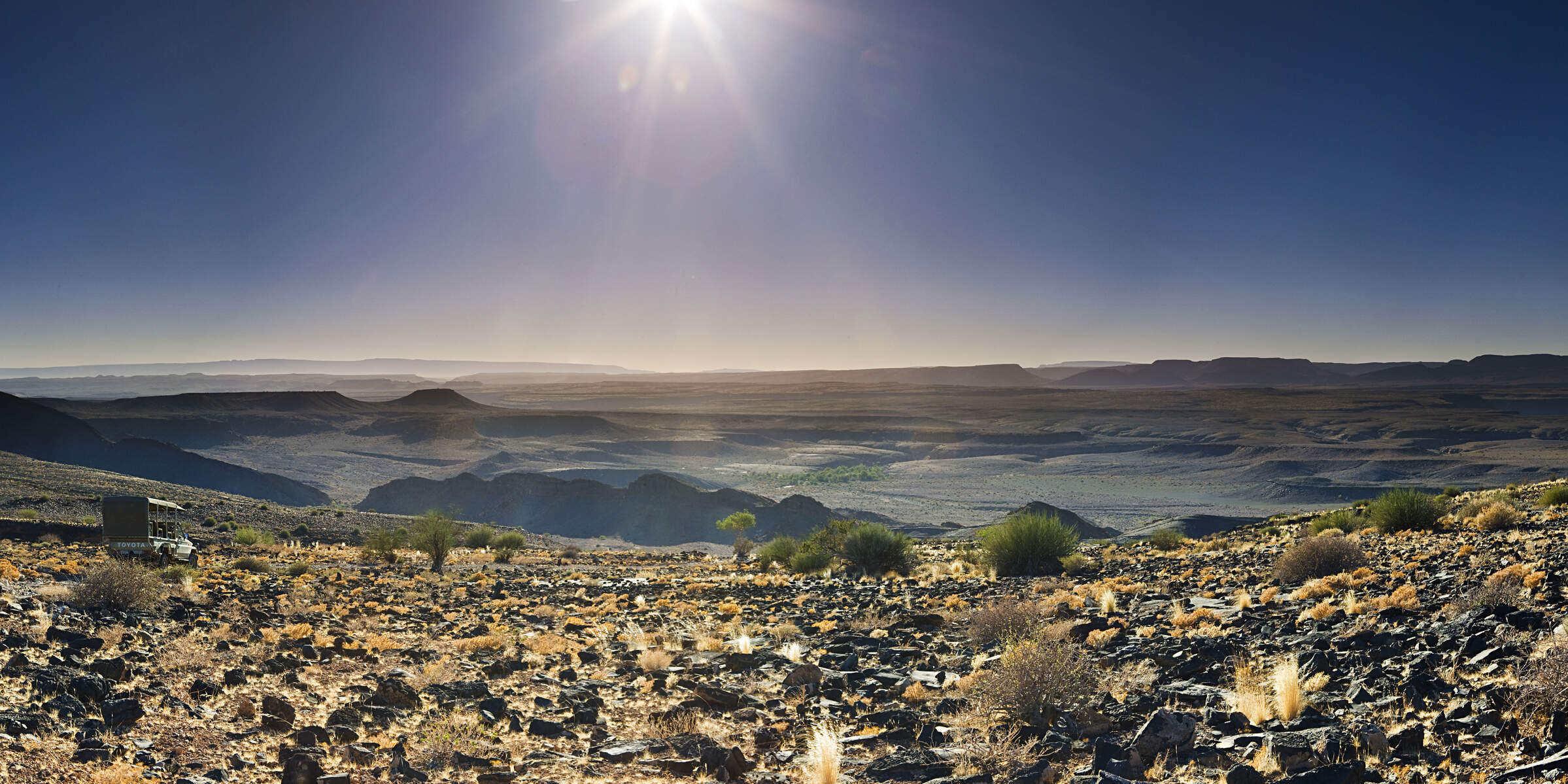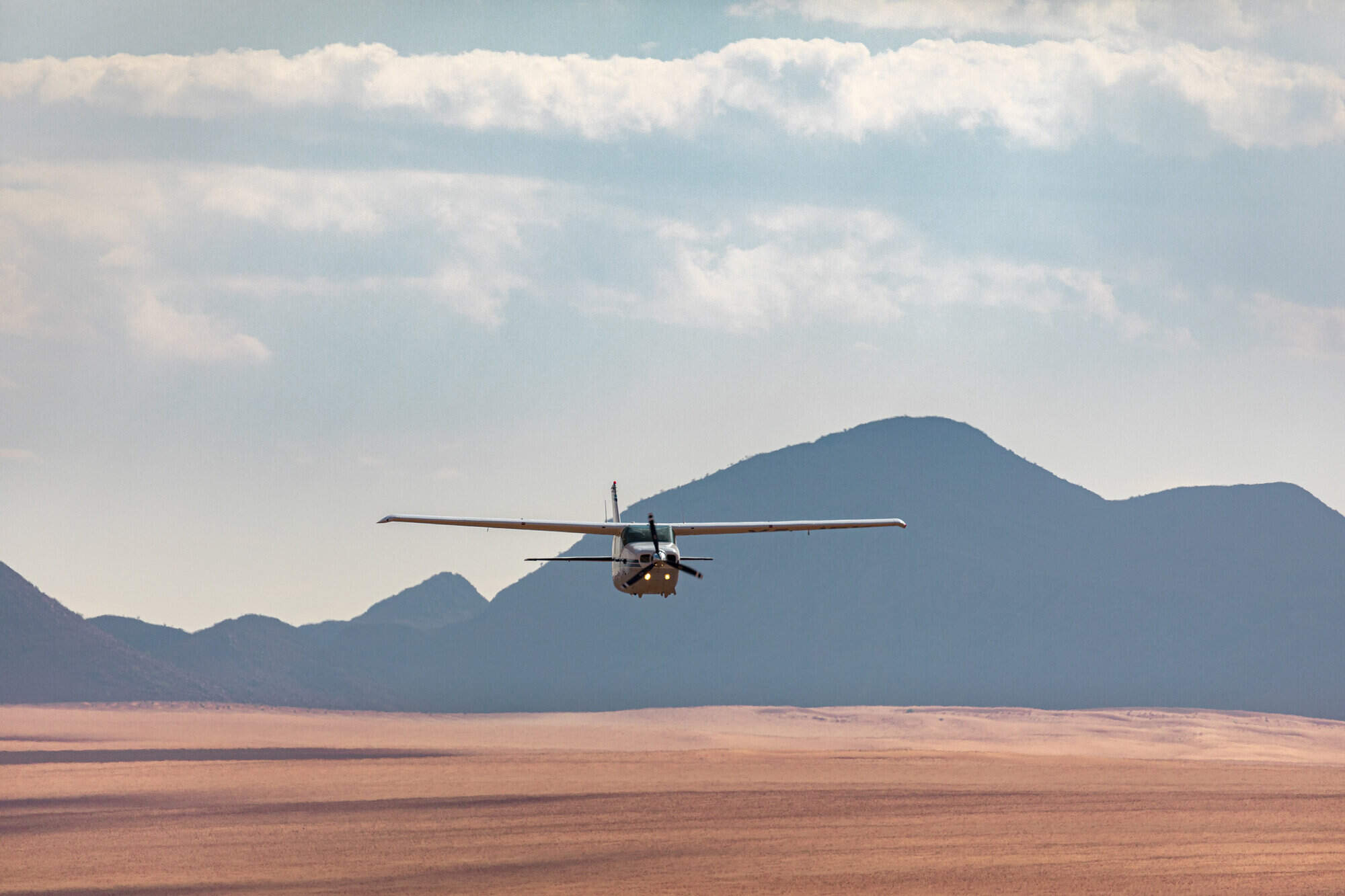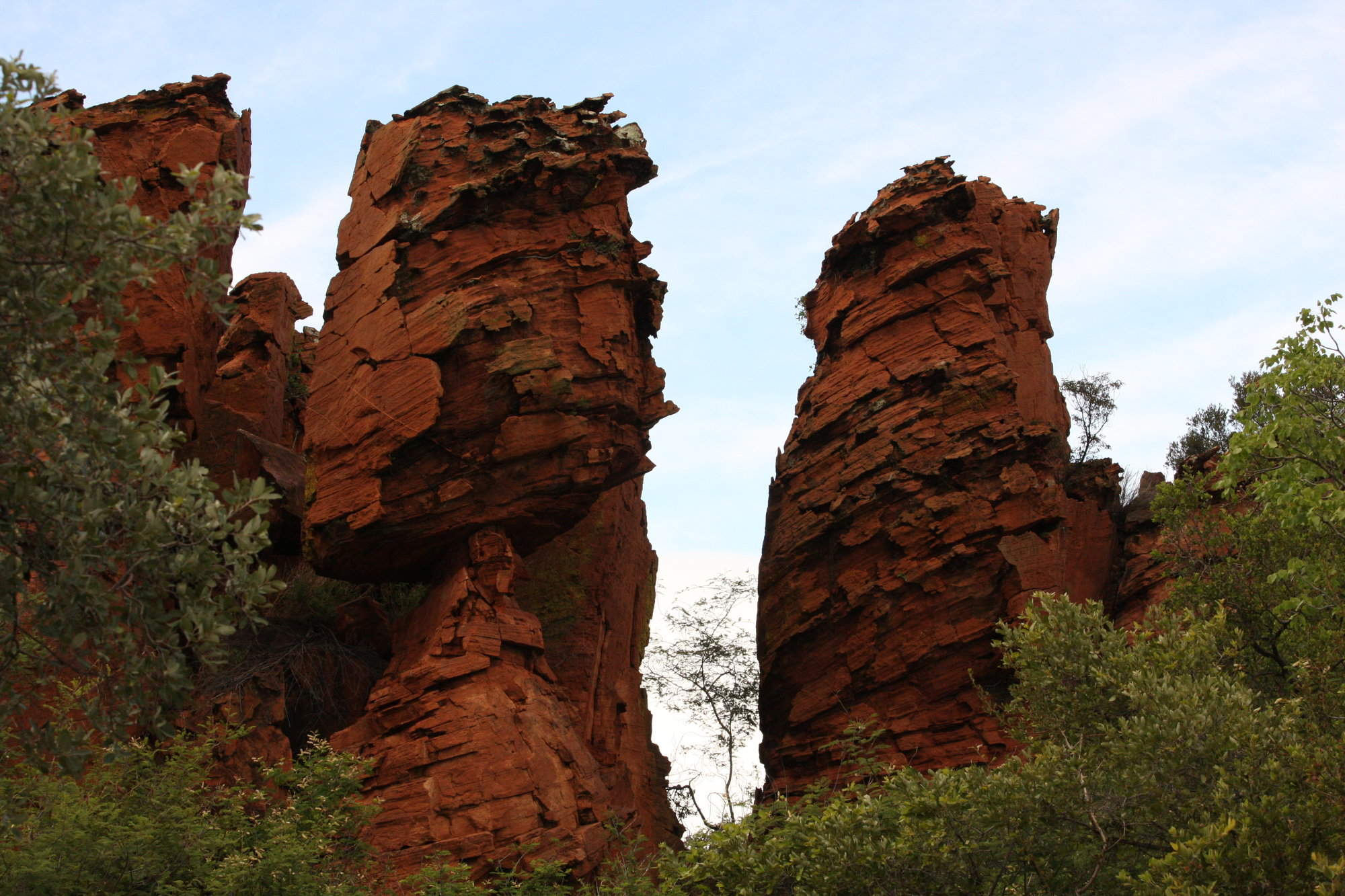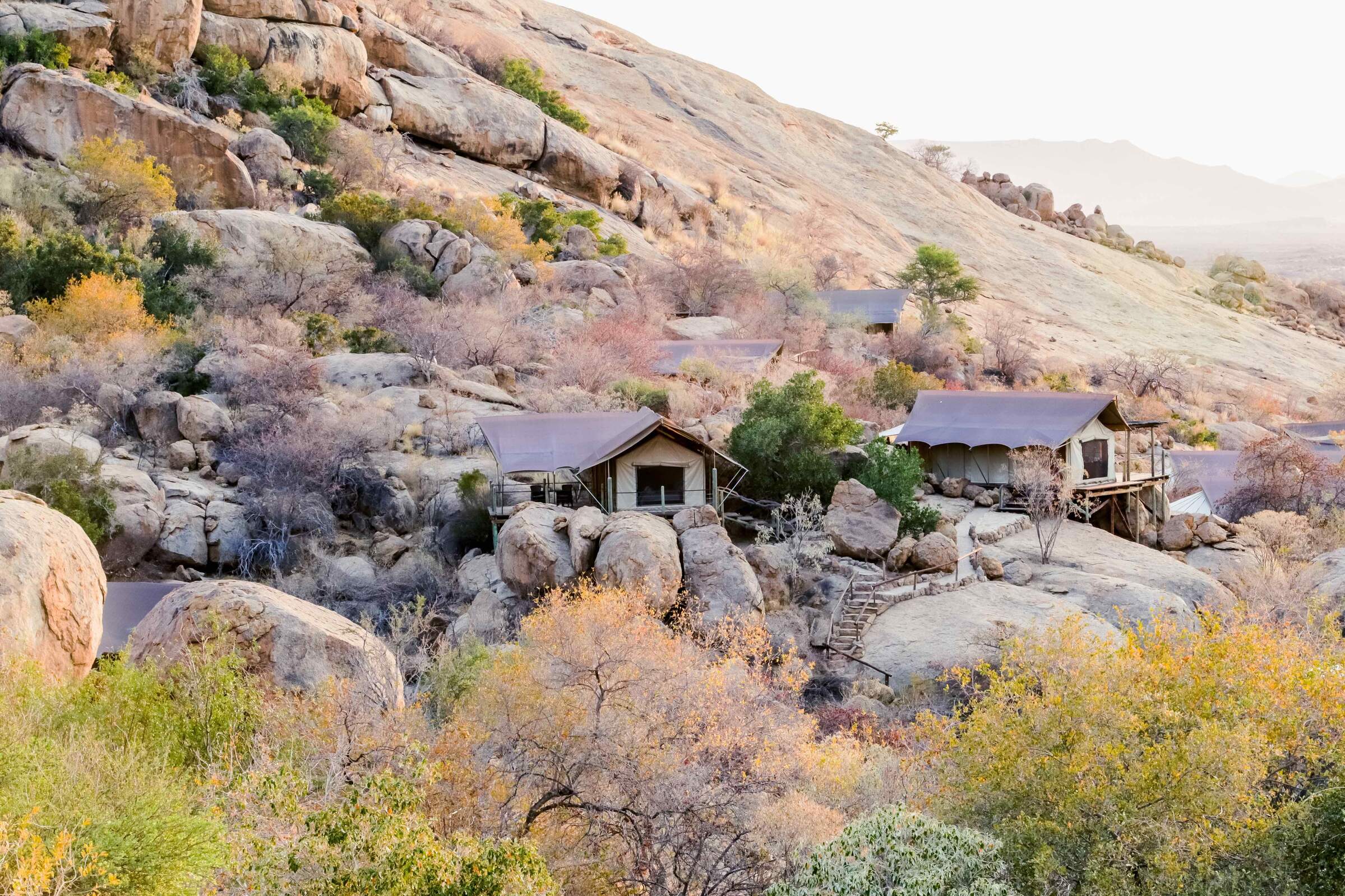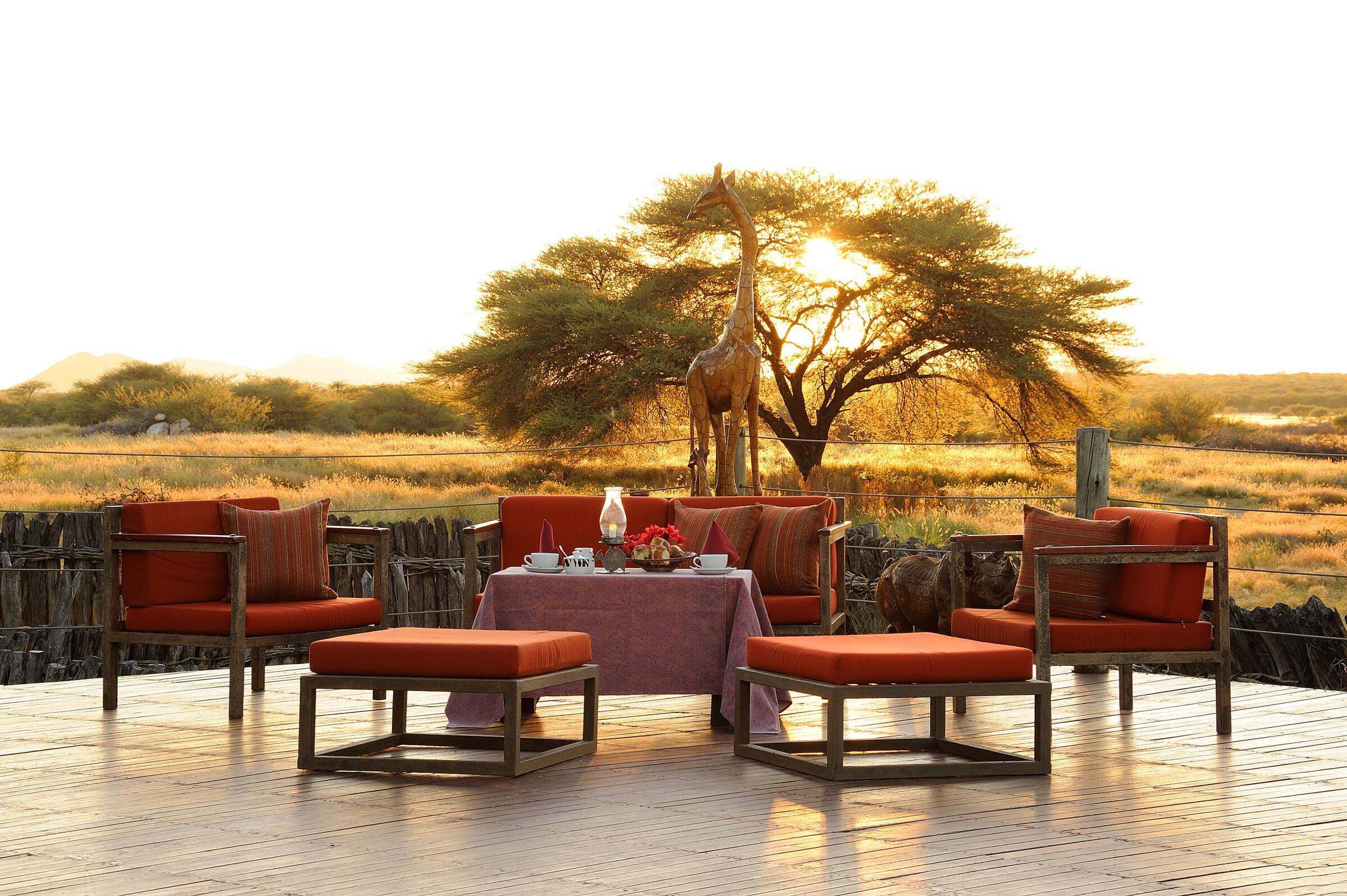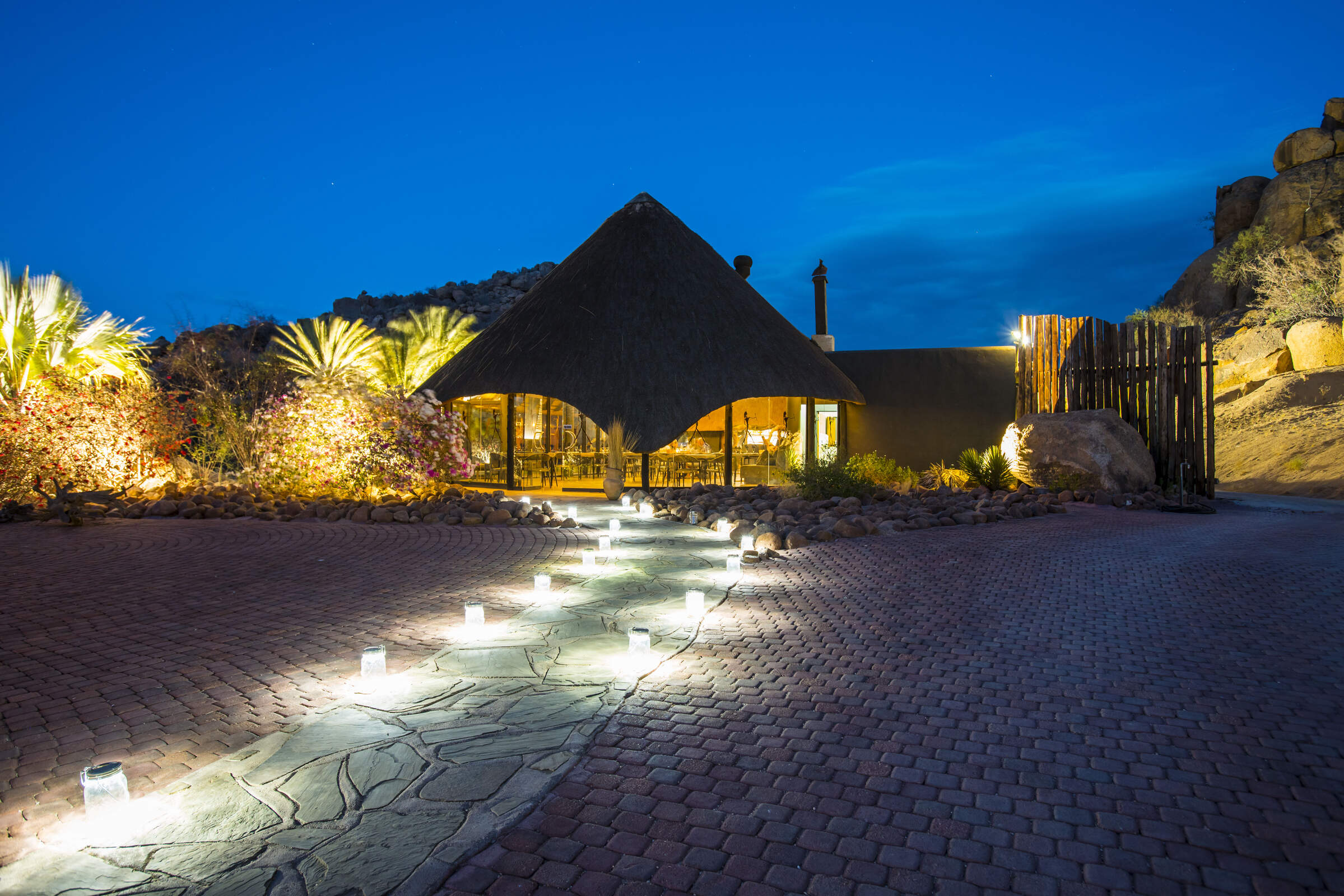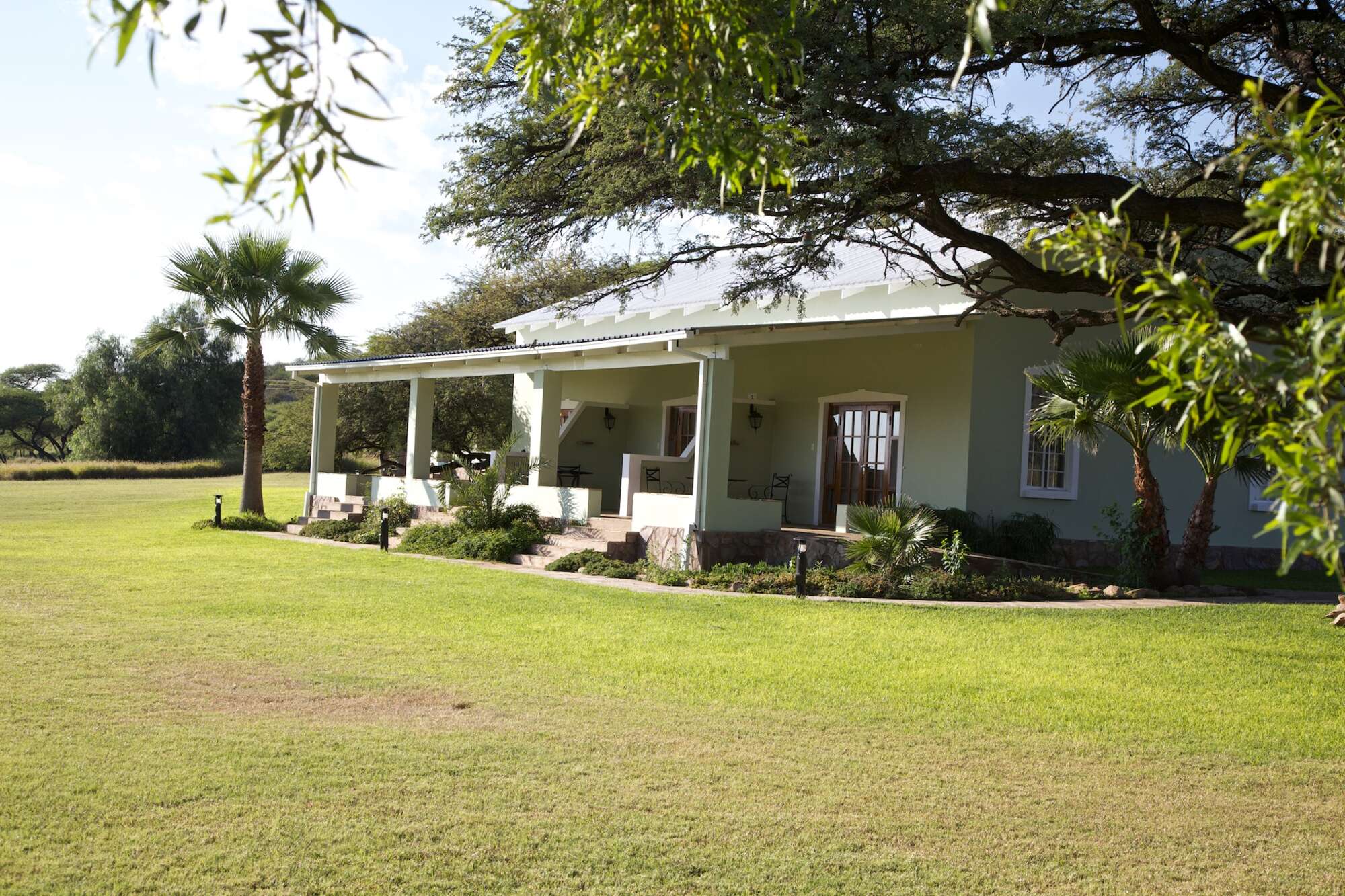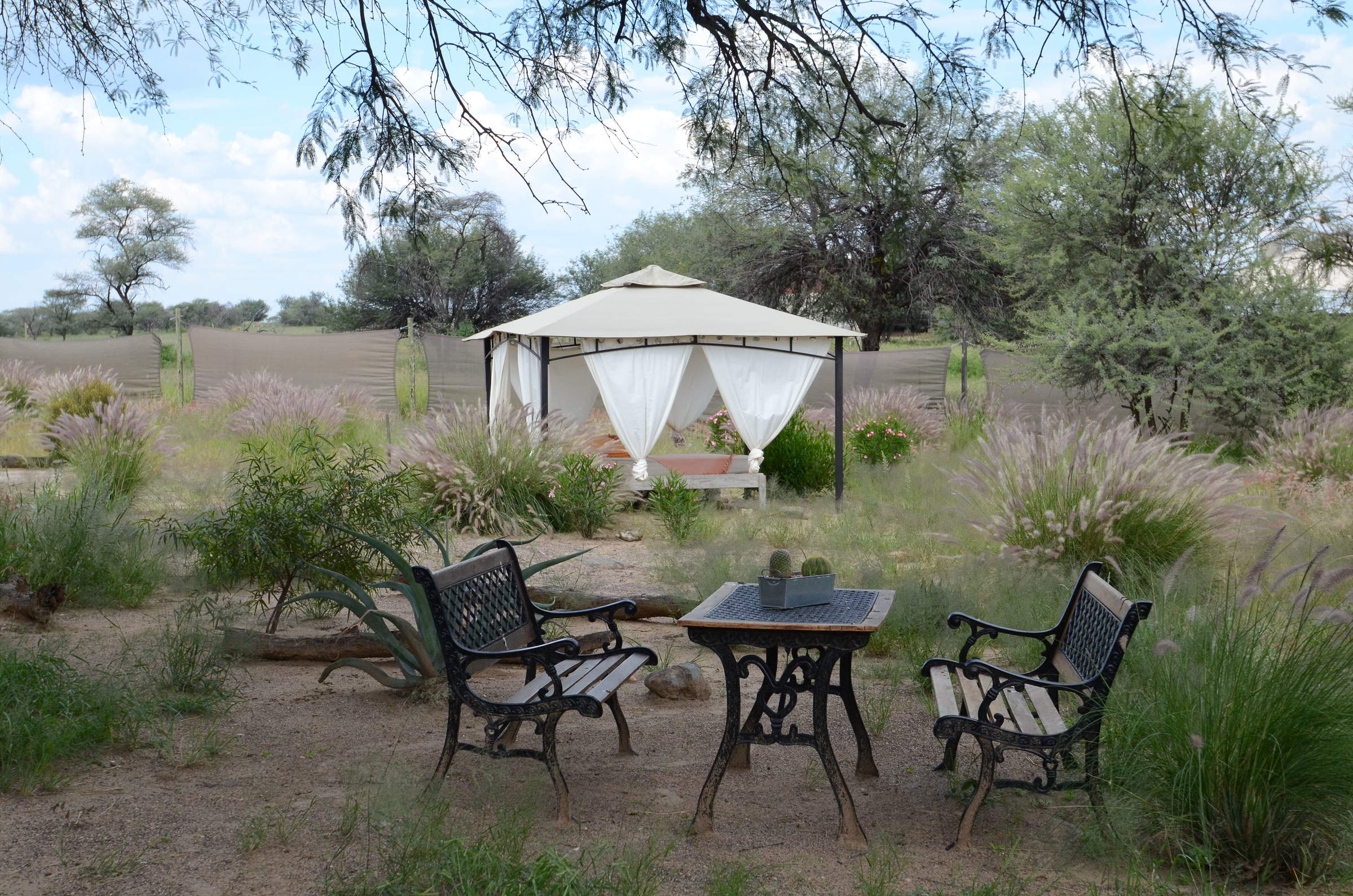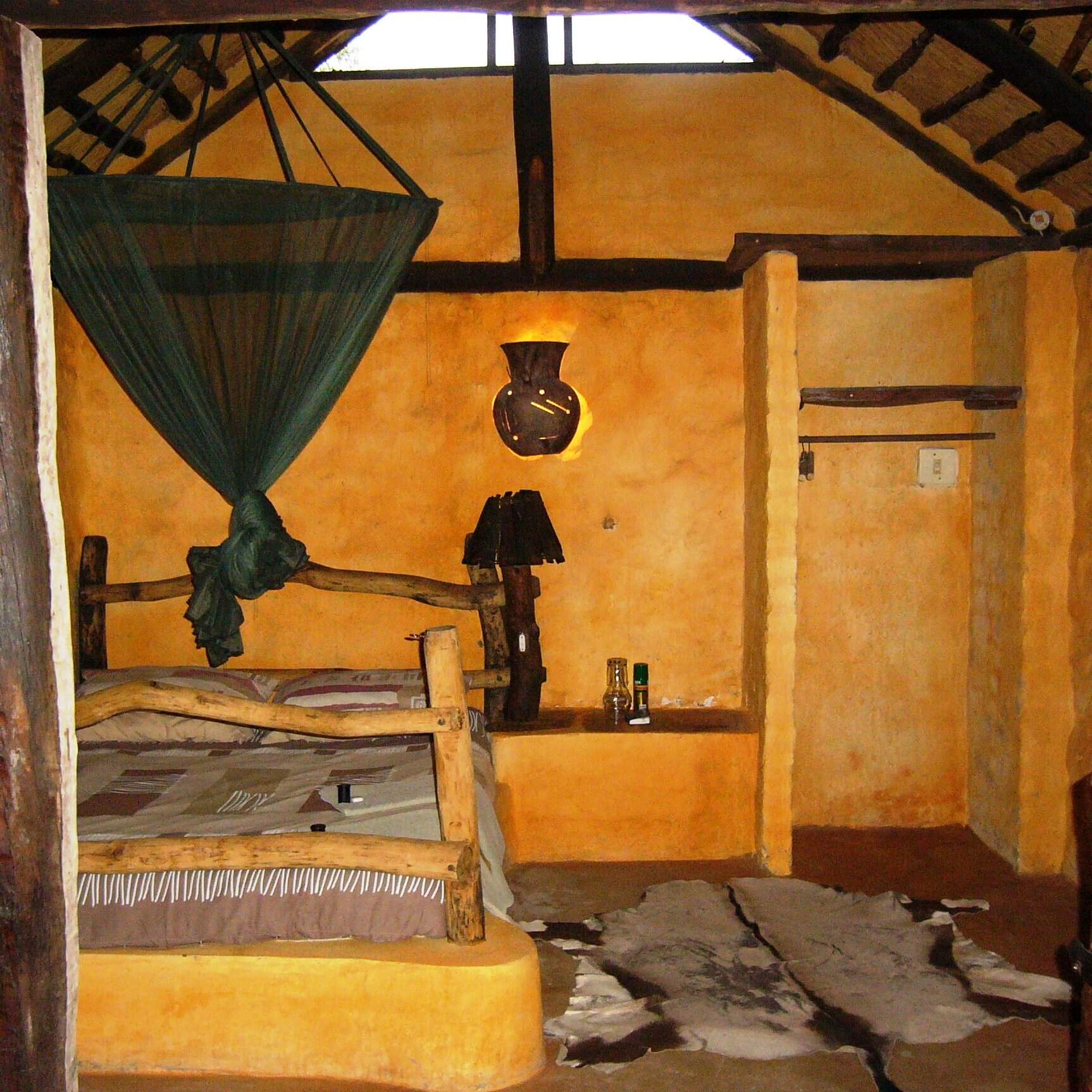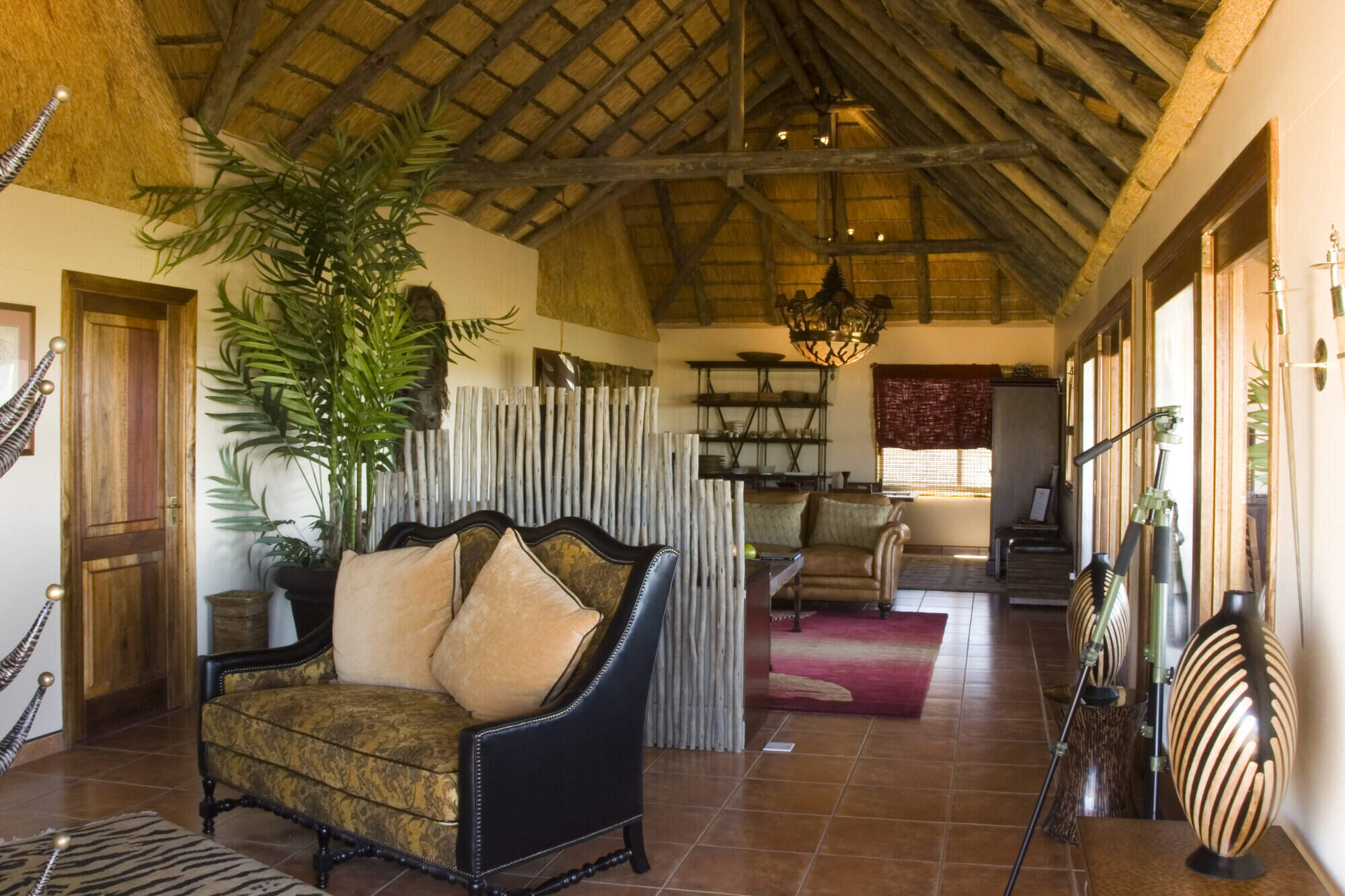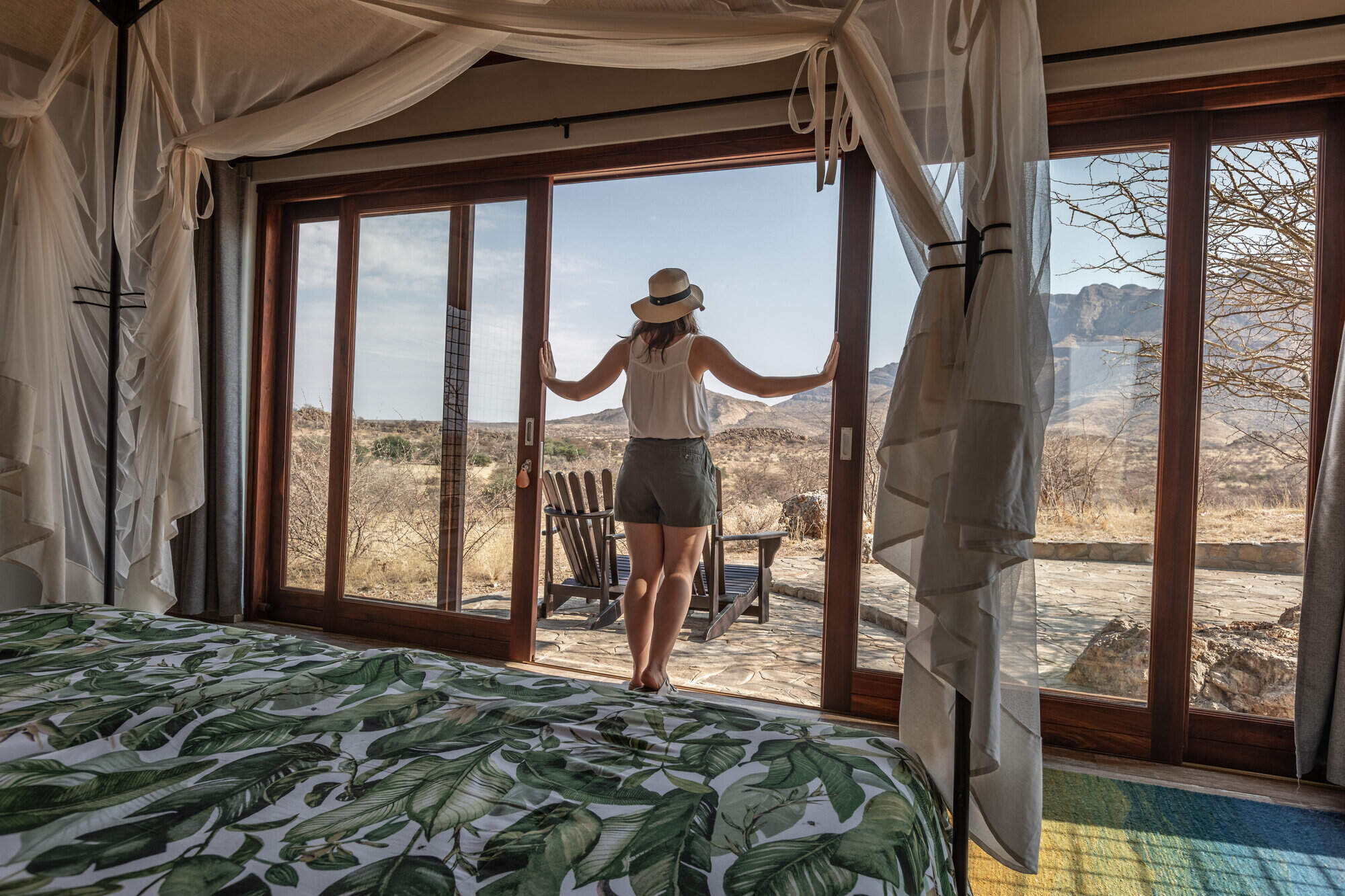About Mundulea Reserve
Mundulea is unique: personal, quirky and very intimate, it offers the chance to explore Namibia’s natural world on foot.
For those who seek not merely to see, but to understand, Mundulea should be top of the list.
The reserve was created through the dedication and passion of owners Bruno and Kate Nebe, who set about re-wilding this area of the Otavi Mountains at the turn of the millennium. One of Namibia’s top guides, with an encyclopedic knowledge and seemingly infinite curiosity, Bruno has re-introduced most of the wildlife that is naturally found in the region, protecting Namibian rarities such as black-faced impala and the heavily endangered pangolin.
Visitors at Mundulea explore on the animals’ terms, for this is no ordinary safari. Yes, there are hides, strategically placed so you can sit and watch animals as they come to drink, but for the most part you will be out there on foot, glimpsing giraffes through the trees, coming across zebra in a clearing, or perhaps listening to the stampeding hooves of eland at dusk.
There are forests to negotiate, hills to climb, and even caves – though only the very brave will do more than look into these! Then return to the simple yet comfortable camp for good home cooking over an open fire, a spot of R&R – and some superb birdwatching.
- Accommodation
- 4 tents
- Children
- Best for 8+
- Open
- Mid-Jan to mid-Dec
Activities

Birdwatching

Guided walking safari

Private activities
Safaris visiting Mundulea Reserve
Just ideas, we'll always tailor-make a trip for you

Looking for inspiration on where to travel next?
Visit our trip chooser to explore your options and find inspiration for your perfect African adventure
Inspire meTraveller reviews of Mundulea Reserve
86 real, un-edited reviews from Expert Africa's travellers.




















Expert Africa's gallery
When we travel we take lots of photos ourselves to give you a real and un-edited view of the safaris. See our 78 pictures of Mundulea Reserve to get the candid view.
View galleryOur travellers’ wildlife sightings from Mundulea Reserve
Click an animal to see our traveller's success in sighting them.
How we work this out.

100% success

96% success

91% success

91% success

50% success

24% success

5% success

5% success

5% success

5% success

0% success

0% success

0% success
Mundulea Reserve's location
Look closer at the environment and surroundings of Mundulea Reserve.
When to go to Central Highlands
Our month by month guide: What it's like to visit Mundulea Reserve in Central Highlands
Jan
Feb
Mar
Apr
May
Jun
Jul
Aug
Sep
Oct
Nov
Dec
Central Highlands in January
The Central Highlands experiences the heart of the rainy season in January. The Erongo Mountains and Otavi Highlands see localised showers, creating a refreshing change in the landscape.
Days can be clear and warm, with temperatures around 30°C/86°F, while others bring spectacular thunderstorms. These rains can cause flash floods in ephemeral rivers, temporarily transforming the usually dry landscape. The greening environment makes a striking contrast, especially in the rocky terrains of Spitzkoppe and Brandberg.
Many birds in the region, including those in the Waterberg Plateau Park, are in full breeding plumage, and migrant species are abundant. Wildlife in areas like the AfriCat Foundation near Otjiwarongo may be more dispersed due to increased water availability, making sightings less predictable.
- Variable weather, hot with occasional rain
- Thunderstorms possible in the Erongo Mountains and surrounding areas
- Wildlife dispersed, harder to spot
- Birdlife spectacular in the Waterberg Plateau
- Fewer tourists, lower rates for accommodation
Our view
This is not a great time to visit
Weather in January
Central Highlands in February
February is typically the wettest month in the Central Highlands. The variation in weather is significant; areas like Okahandja and Otjiwarongo can experience heavy rains, while the Erongo Mountains might see more sporadic showers. Some days are clear and hot, while others bring cloudy skies and spectacular thunderstorms. These rains can make travel challenging, especially on unpaved roads to attractions like Spitzkoppe.
The landscape turns vibrantly green, particularly noticeable in the usually arid areas around Brandberg. This abundance of water and vegetation makes wildlife viewing in places like the Waterberg Plateau Park more challenging, as animals disperse widely. However, it's an excellent time for birdwatching, with many species raising their young and insects becoming more prevalent.
- Hot and humid with some rainfall
- Lush landscapes in Otavi Mountains
- Excellent birdwatching opportunities
- Wildlife viewing challenging but rewarding
- Few tourists, good deals on accommodation
Our view
This is not a great time to visit
Weather in February
Central Highlands in March
March usually sees the rains in the Central Highlands tapering off, and daily temperatures can spike to close to 40°C/104°F. The Erongo and Otavi Mountains may still experience occasional showers, but many days are clear with strong sunshine. Late afternoons might bring short, spectacular thunderstorms, particularly around higher elevations like Waterberg Plateau.
The landscapes across the region, from Okahandja to Otjiwarongo, are often at their most vivid green. This abundance of vegetation can make wildlife spotting more challenging in areas like the AfriCat Foundation, as animals have plenty of cover. However, it's an excellent time for hiking in the Erongo Mountains or exploring the rock art at Brandberg – though it’s recommended to hike in the early mornings to avoid the soaring temperatures and last of the summer storms in the afternoons.
Many birds and animals are finishing raising their young, making it an interesting time for nature observation.
- Less rainfall, though humid and hot
- Erongo Mountains ideal for hiking
- Animals well-fed after months of plentiful rainfall
- Migratory birds begin to depart
- Few tourists visit during March, so rates often low
Our view
A good time to visit, with pros & cons
Weather in March
Central Highlands in April
April in the Central Highlands central Namibia is dominated by dry weather, with decreasing chances of rain. Temperatures in areas like Okahandja and Otjiwarongo start to fall towards the end of the month, making daytime conditions pleasant for outdoor activities. The nights might have a slight chill, especially in higher areas like the Erongo Mountains.
The landscape remains verdant from the recent rains, creating beautiful scenery around attractions like Spitzkoppe and Brandberg. This is an excellent time for photography, with clear air and spectacular landscapes. Wildlife viewing at places like the AfriCat Foundation or Waterberg Plateau Park can be rewarding, with animals in great condition after the rainy season. However, finding big game can still be challenging as water remains widely available.
April offers good value for tourists, with many lodges still charging low-season rates.
- Cooler nights, pleasant daytime temperatures
- Easter brings a slight increase in visitors
- Wildlife more visible as vegetation thins
- Fresh air and green landscapes
- Great time for photography in Spitzkoppe
Our view
A good time to visit, with pros & cons
Weather in April
Central Highlands in May
By May, central Namibia starts drying out rapidly. Days are typically warm with crisp, clear mornings and blue skies. Evenings are cool, with temperatures potentially dropping below 10°C/50°F overnight. If the rains have been good, areas like the Erongo Mountains and Otavi Highlands remain green, but wildlife starts to concentrate around permanent water sources.
The air quality and clarity in the region can be amazing, making this an ideal month for photography at iconic locations like Spitzkoppe or Brandberg. This is an excellent time for hiking in the Erongo Mountains or exploring the Waterberg Plateau, with comfortable temperatures and increasingly good wildlife sightings.
Many lodges in the area still offer low-season prices, making May a great value month for visiting the area.
- Dry, warm days and cool nights
- Landscapes transition from green to gold
- Excellent visibility for wildlife viewing
- Moderate rates as high season approaches
Our view
A very good time to visit
Weather in May
Central Highlands in June
June brings dry conditions. Skies are blue and largely cloudless over areas like Okahandja and Otjiwarongo. Days are lovely and warm, but nights can be cold, sometimes approaching freezing in exposed areas like Spitzkoppe. Visitors should pack warm clothing for early morning activities, such as game drives at the AfriCat Foundation.
Wildlife viewing in the region, especially around Waterberg Plateau Park, follows dry-season patterns with animals congregating around water sources. The clear air makes this an excellent time for photographers to capture the dramatic landscapes of the Erongo Mountains or Brandberg.
Historically, June has offered lower rates, but with increasing popularity, some lodges now consider it part of their high season, so early booking is advisable.
- Clear, crisp days and cold nights
- Erongo Conservancy offers great game drives
- Stargazing opportunities in the Brandberg area
- Wildlife concentrates around water sources
- Moderate lodge rates, increasing number of visitors
Our view
A very good time to visit
Weather in June
Central Highlands in July
July in the Central Highlands offers reliably warm daytime temperatures above 20°C/68°F and excellent wildlife viewing opportunities. Rain is extremely rare, and clear skies provide perfect conditions for stargazing in areas like the Erongo Mountains. However, the occasional cold front can pass over the area, and nights can be very cold, potentially dipping below freezing in exposed areas like Spitzkoppe. Visitors should dress in layers and be prepared for chilly mornings and evenings.
As vegetation becomes sparse, game concentrates around water sources, making this an ideal time for wildlife viewing at places like the AfriCat Foundation near Otjiwarongo, or Waterberg Plateau Park. The dry conditions also make this a great time for hiking and rock climbing activities in the region.
Lodges typically charge high-season rates, and popular spots can book up well in advance.
- Dry days, cold nights in the Central Highlands
- Peak season for wildlife viewing begins
- European holidays bring more family travellers
- Higher rates, advanced bookings necessary
- Excellent time for hiking in Waterberg
Our view
A very good time to visit
Weather in July
Central Highlands in August
August marks the height of winter in the Central Highlands. Expect cloudless skies and warm sun during the day, but nights can drop to freezing in exposed areas like Spitzkoppe or the Erongo Mountains. Visitors should bring warm clothes for chilly mornings and evenings, especially for activities like early game drives.
The landscape is at its driest, with golden-brown vegetation dominating. This makes wildlife viewing excellent, particularly in areas like Waterberg Plateau Park or the AfriCat Foundation near Otjiwarongo, as animals congregate around remaining water sources.
August is one of the most popular times to visit the Central Highlands, especially for families. Attractions like Brandberg's rock art sites or hiking trails in the Erongo Mountains are particularly appealing in the cooler weather. Early booking is essential for the best lodges.
- Warm days in the sun, very cold nights
- Spectacular stargazing in Erongo Mountains
- Wildlife viewing at its best in the region
- Peak season rates, limited availability
Our view
Fantastic: the very best time to visit
Weather in August
Central Highlands in September
September in the Central HighlandsCentral Highlands brings blue, cloudless skies and fantastic wildlife viewing opportunities. Rain is almost unheard of, and as the month progresses, both days and nights get warmer. Daytime temperatures in areas like Okahandja and Otjiwarongo can reach the low 30s °C/80s °F .
The air becomes dustier, which can create hazy conditions for photographers capturing the dramatic landscapes of Spitzkoppe or the Erongo Mountains. Wildlife viewing is at its peak, with animals congregating around remaining water sources. This makes September an excellent time to visit places like the AfriCat Foundation or Waterberg Plateau Park.
It's one of the most popular months for visitors, especially safari enthusiasts, and lodges charge high-season rates. Early booking is advisable for prime locations.
- Warm days, temperatures rising steadily
- Landscapes golden brown, great for photos
- Excellent month for wildlife observation
- High season rates, book well in advance
- Himba cultural tours available near Opuwo
Our view
Fantastic: the very best time to visit
Weather in September
Central Highlands in October
October is typically the hottest and driest month in the Central Highlands. Temperatures build throughout the month, with daily highs potentially exceeding 40°C/104°F in areas like Okahandja and Otjiwarongo. Despite the heat, the low humidity makes conditions bearable.
This is the peak of the dry season, making it an excellent time for wildlife viewing in places like Waterberg Plateau Park or the AfriCat Foundation, as animals gather around scarce water sources. However, dust and occasional smoke can make the air hazy, challenging for photographers. The Erongo Mountains and Spitzkoppe offer dramatic, parched landscapes.
October is popular among wildlife enthusiasts and commands peak-season prices. Towards the end of the month, visitor numbers may decrease slightly, offering a window for last-minute bookings.
- Hot and dry throughout Central Highlands
- Prime time for game viewing in reserves
- Waterberg Plateau offers scenic hikes
- Peak rates, limited availability at lodges
- Spitzkoppe ideal for rock art enthusiasts
Our view
A very good time to visit
Weather in October
Central Highlands in November
November in the Central Highlands can be unpredictable. Mornings are often hot and cloudless, but afternoons may bring cloud cover and cooler temperatures. Areas like Okahandja and Otjiwarongo might experience spectacular late-afternoon thunderstorms as humidity builds. These storms are typically localised and may be absent from more arid areas like Spitzkoppe. Places receiving good rain, such as the Erongo Mountains, quickly turn green, bringing a sense of renewal to the landscape.
This is an exciting time for wildlife, with many mammals giving birth. Once rains arrive, wildlife in areas like Waterberg Plateau Park becomes more dispersed, making game viewing more challenging. However, November is excellent for birdwatchers, with migrant species arriving in breeding plumage, especially noticeable in the diverse habitats of the Central Highlands.
- Variable weather, possible early rains
- New vegetation growth begins if it rains
- Wildlife viewing good in Erongo region
- Shoulder season, rates become more moderate
- Bird watching excellent as migrants return
Our view
A good time to visit, with pros & cons
Weather in November
Central Highlands in December
December marks the start of the rainy season in the Central Highlands and is one of the hottest months. In areas like Okahandja and Otjiwarongo, clear mornings often give way to building clouds and occasional spectacular thunderstorms. These rains are generally welcomed, refreshing the parched landscapes of places like the Erongo Mountains and Spitzkoppe. Even short showers can trigger a rapid greening, providing food for young animals.
Wildlife tends to disperse widely, which can make game viewing at locations like the AfriCat Foundation or Waterberg Plateau Park more challenging. However, many birds are breeding, sporting their most colourful plumage.
The holiday season can make popular attractions and accommodation options busy, especially in cooler areas like the Erongo Mountains. Visitors should book well in advance and be prepared for potential weather-related changes to their plans.
- Hot with possibility of rain showers
- Landscapes green where rain has fallen
- Otavi Mountains offer scenic game drives
- Best time for birding enthusiasts
- Holiday season brings more local tourists
Our view
This is not a great time to visit
Weather in December
Other areas in Namibia
Namibia fact file
Useful information and advice to help you prepare for a trip including Mundulea Reserve
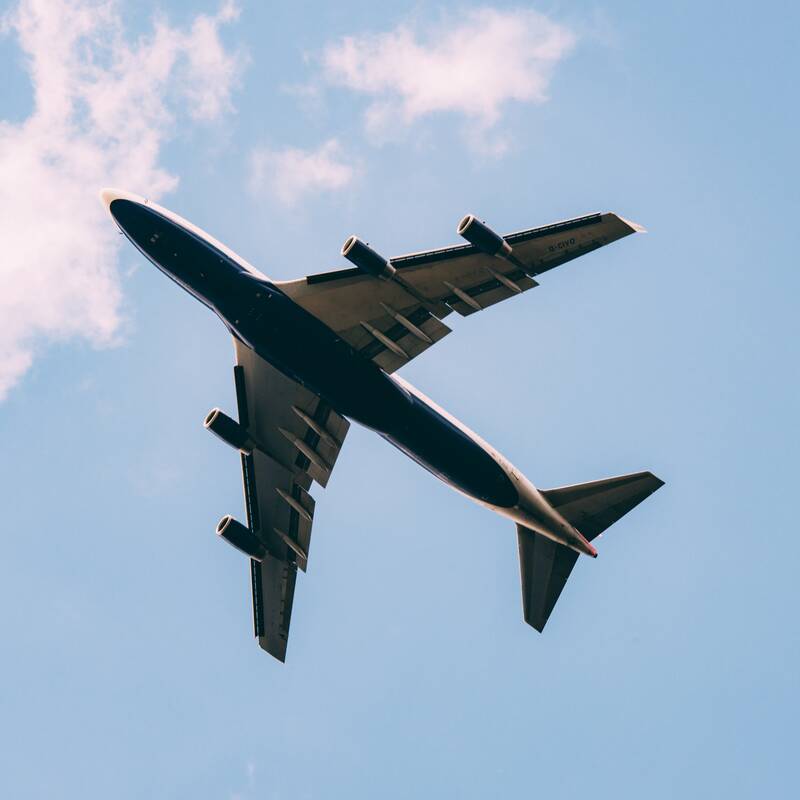
Flights to Namibia
Advice on how to get to Namibia
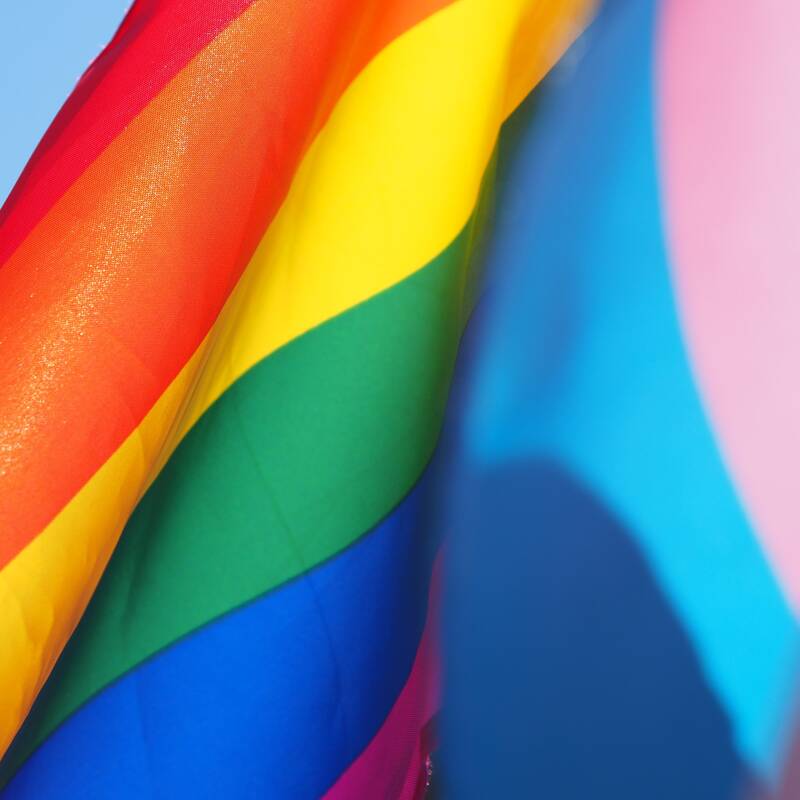
LGBT travel in Namibia
Attitudes, the law & our experiences

Namibia general info
Essential travel info on Namibia
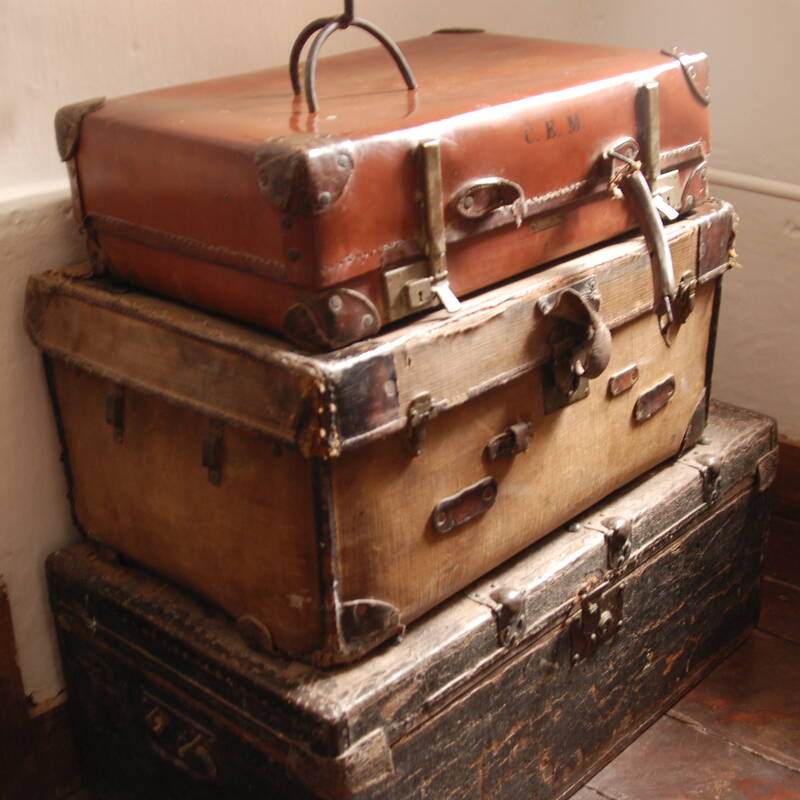
Namibia safari packing list
Advice and tips on what to take to pack

Self-drive - car types
Which car type to rent
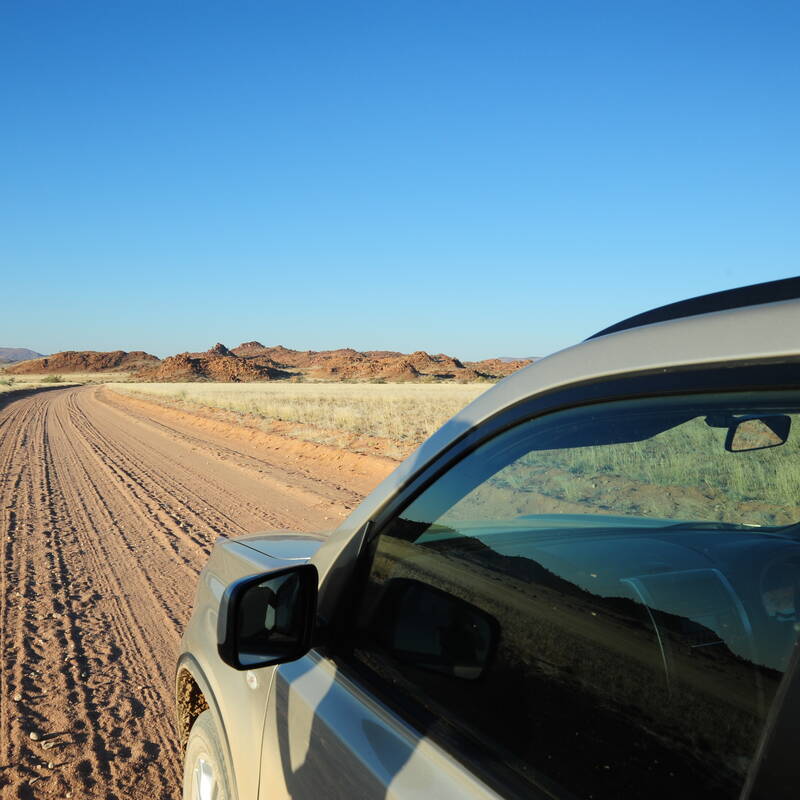
Self-drive - driving tips
Tips to make driving in Namibia easier
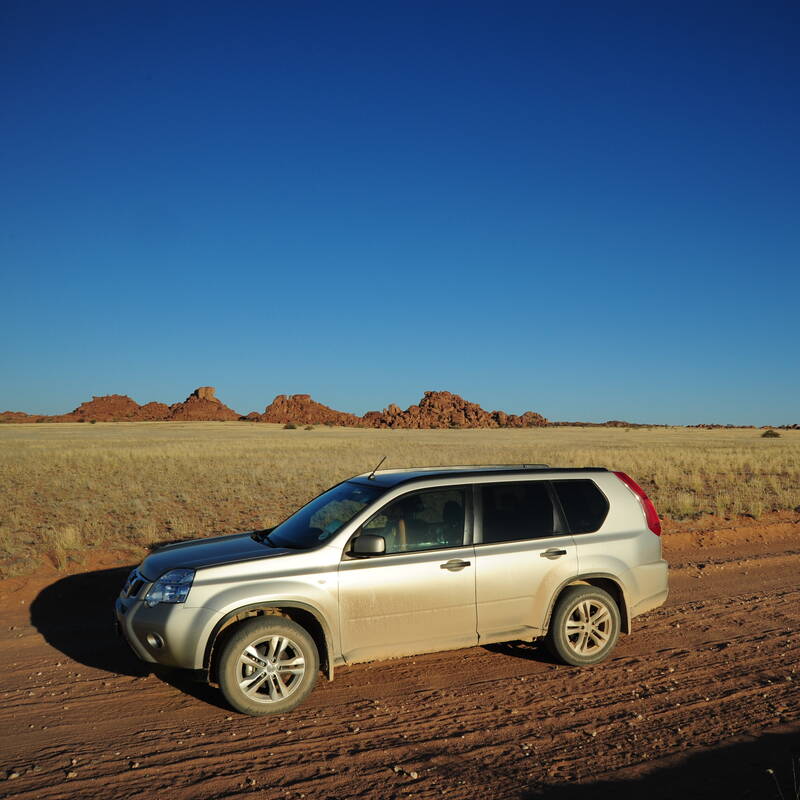
Self-drive - hire groups
The different car hire group to rent
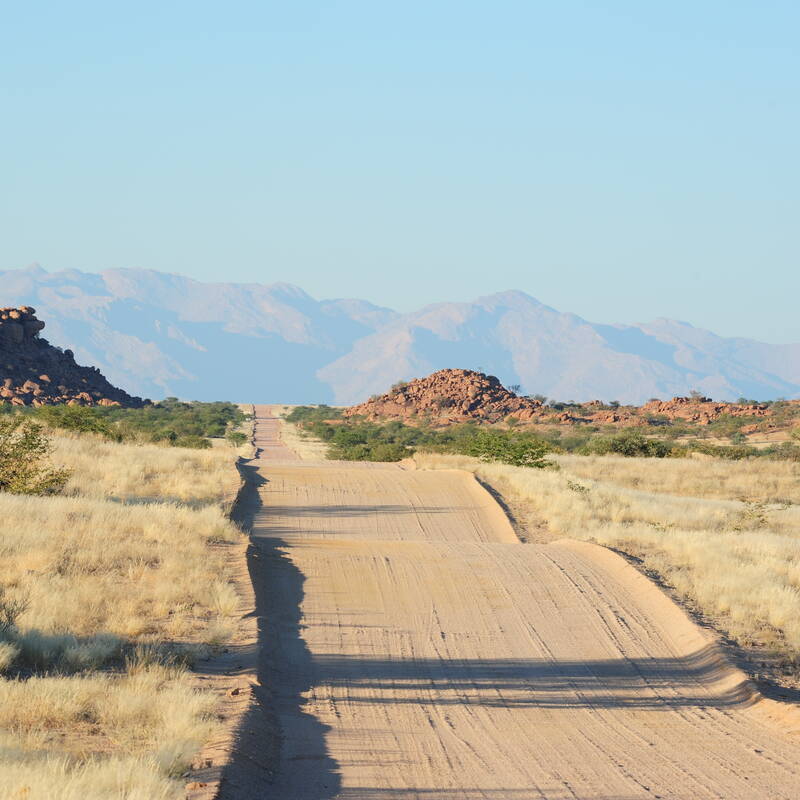
Self-drive - road types
Including pictures & descriptions of roads
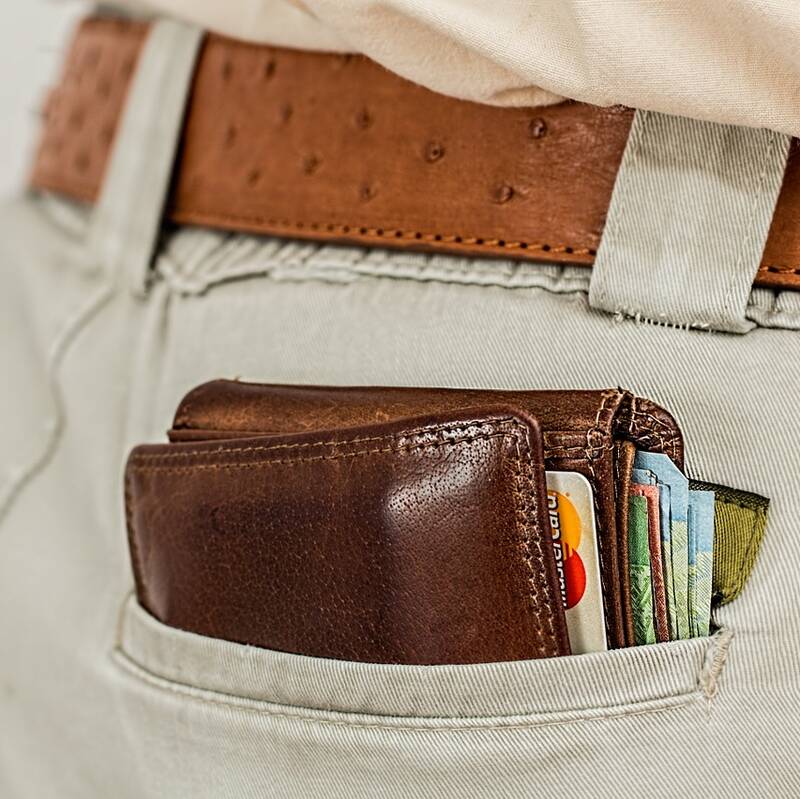
Tipping in Namibia
Expectations & guidelines for tipping
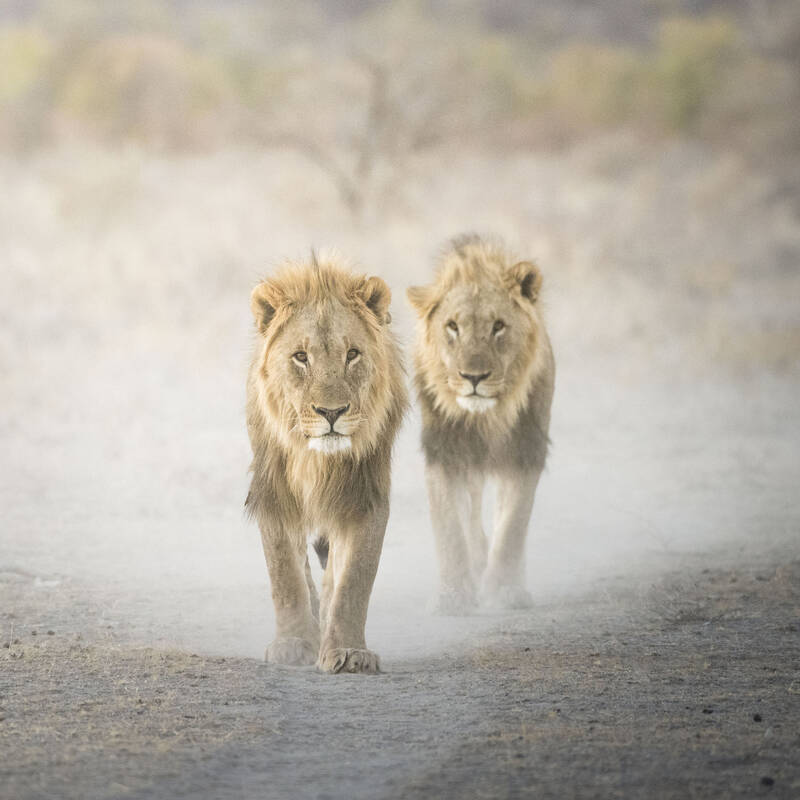
Wildlife - cats & dogs
Including cheetah, lion, leopard, jackal & hyena
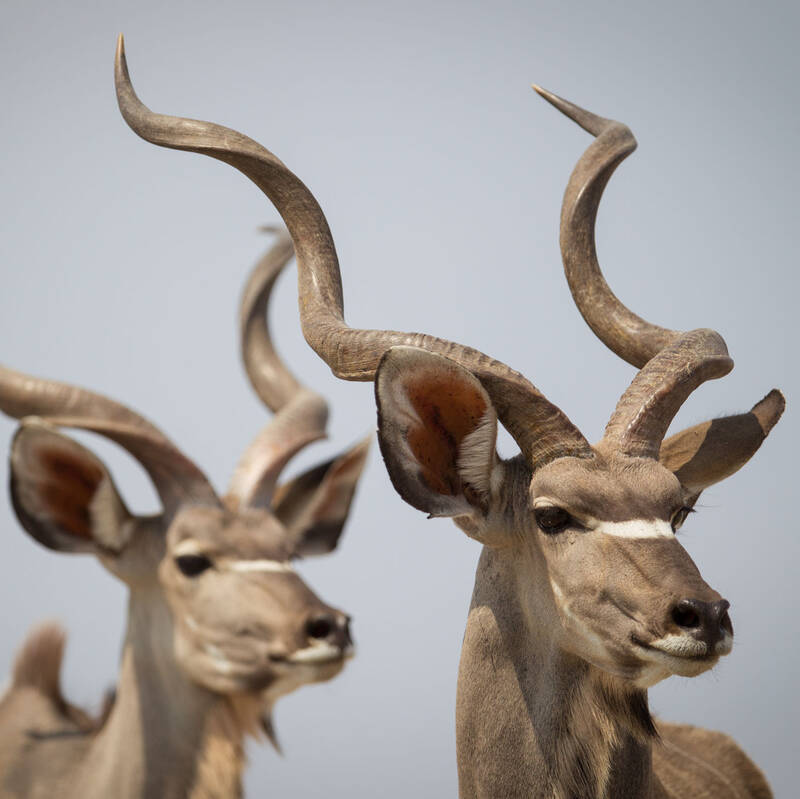
Wildlife - large antelope
Including sable, eland & blue wildebeest
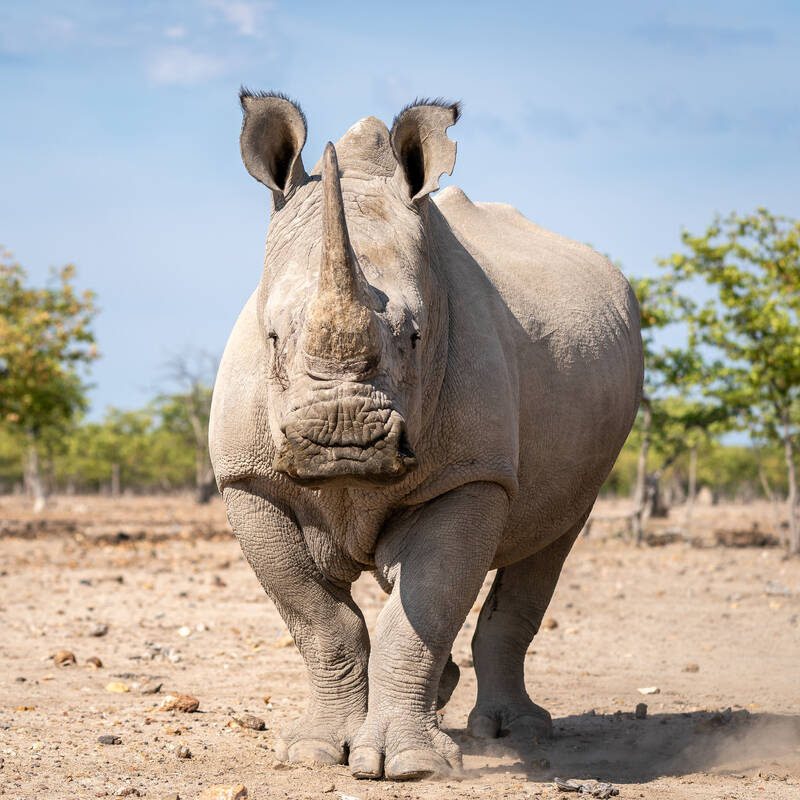
Wildlife - large herbivores
Including elephant & black rhinos
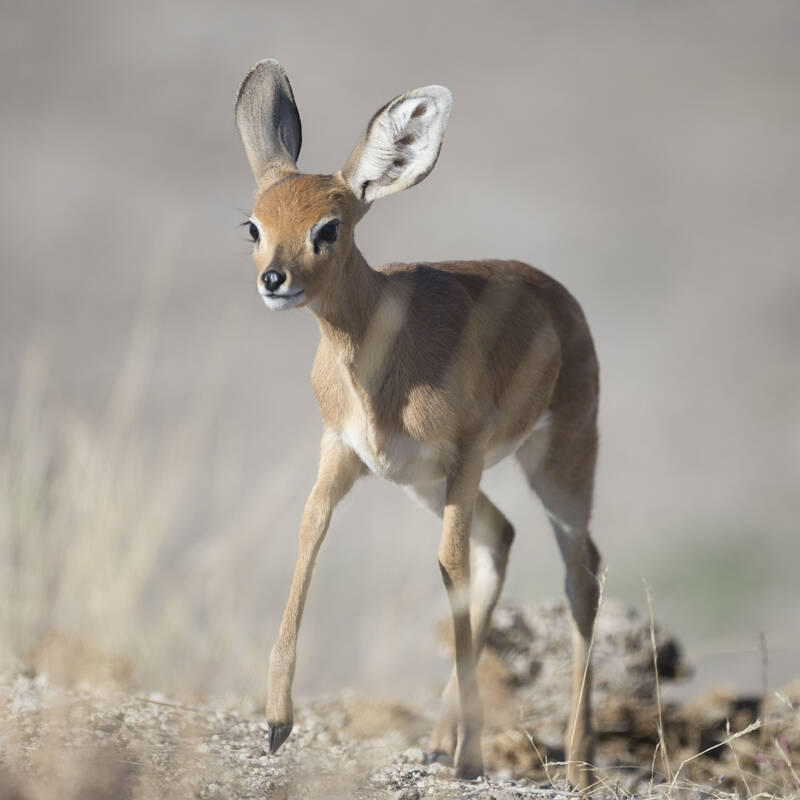
Wildlife - smaller antelope
Including klipspringer & common duiker
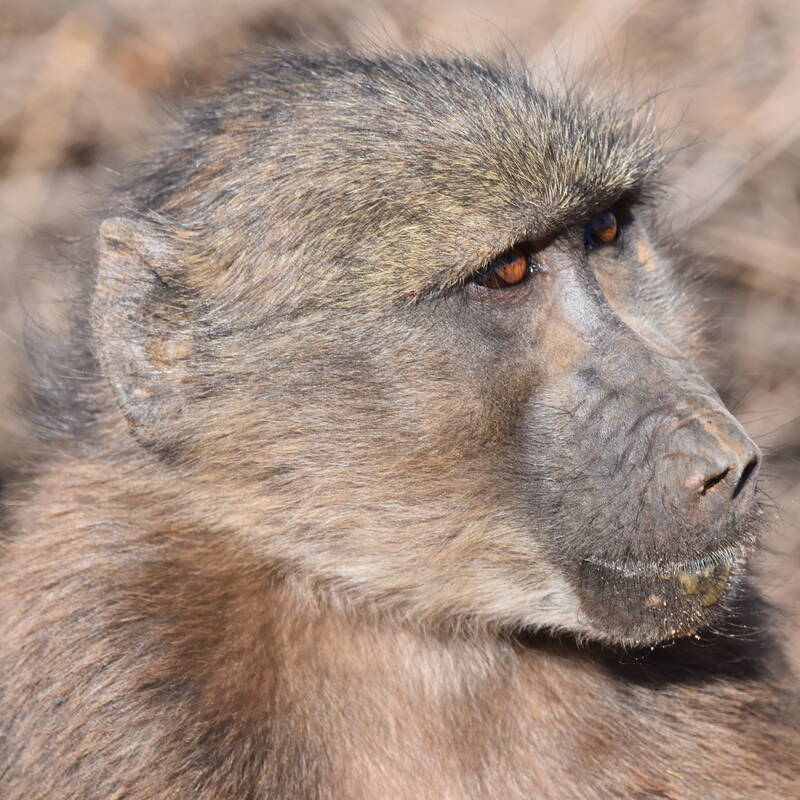
Wildlife - primates
including Chacma baboon & Lesser bushbaby

Wildlife - small mammals
Including banded mongoose & pangolin
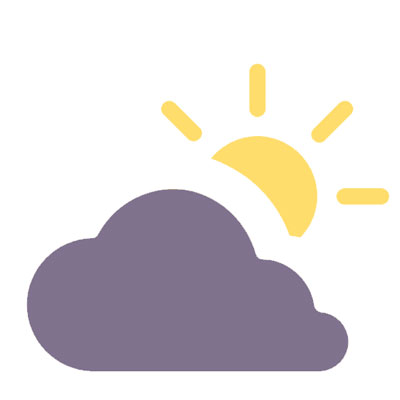
Weather & climate
The best time to visit Namibia
Other lodges in Central Highlands
Alternative places to stay in this same area.
